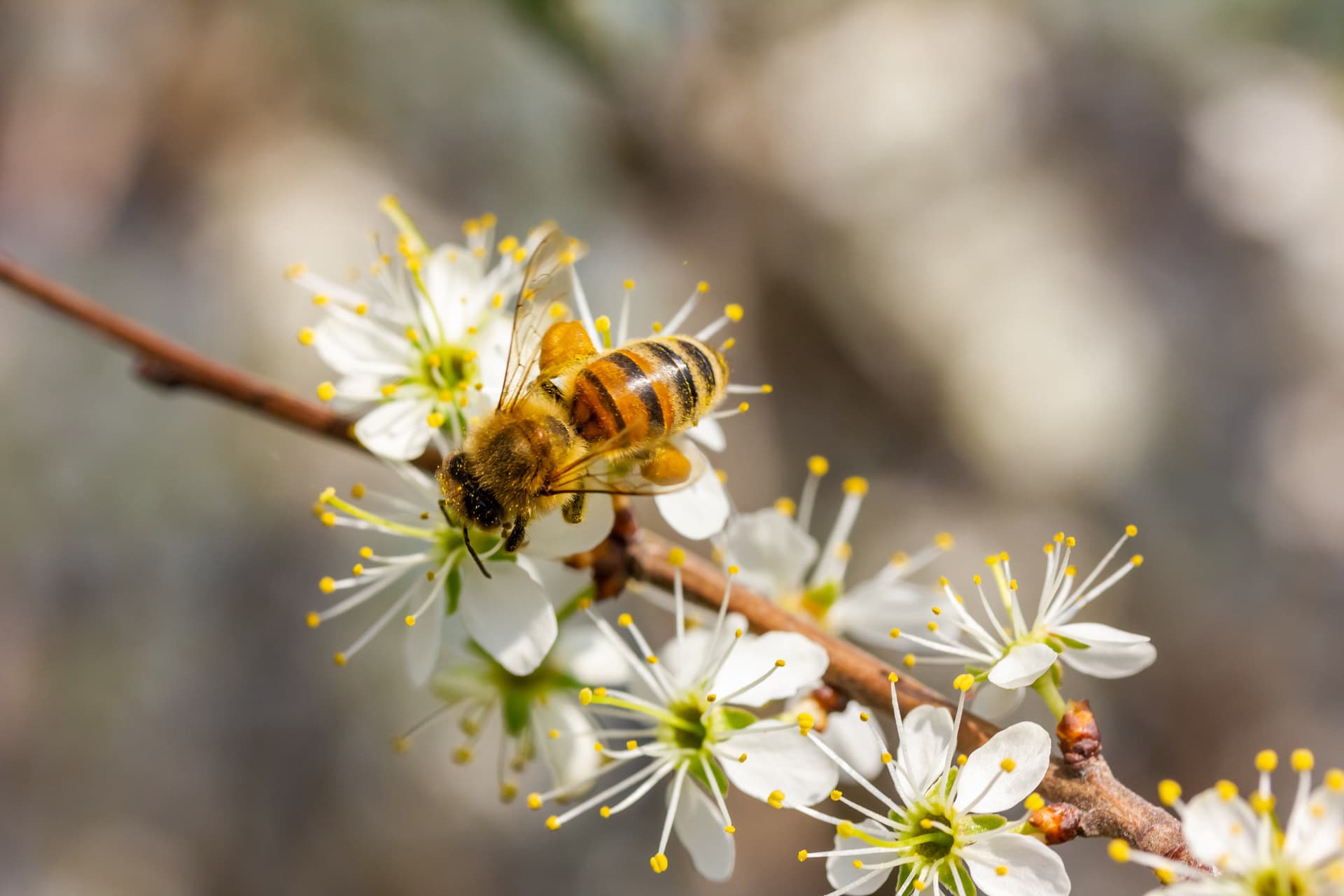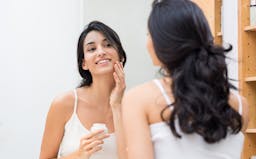The Healing Benefits of Honey
Article by:
Amazing Discoveries™ |
11 min read
Did you know honey is one of the oldest natural antibiotics and is used in medicine to this day? If you’re looking for natural antibiotics for tooth infection, dry socket treatment, or want to learn how to heal a wound that won’t close, find out why honey may be the answer. Discover the science behind the healing benefits of honey.
Many assume that because it’s sweet, honey is basically the same as sugar. But nothing could be further from the truth. Honey offers many impressive—and some surprising—health benefits.
From ancient times, honey has been used both as a sweetener and as a medicine. In ancient India it was used for treating coughs, stomach complaints, burns and wounds, lung problems, and anemia. Ancient Egyptians included honey as an ingredient in most medicines. Because of its antimicrobial properties, it was also used for embalming the dead. In ancient Greece, Hippocrates recommended honey as part of a healthy diet and included it in prescriptions for eye diseases, fever, sore throat, wounds, and the treatment of scarring.
Researchers today have confirmed honey’s place as an effective natural remedy with powerful healing properties.
How honey is made
When a honeybee sips nectar from blossoms, the nectar goes into the bee’s honey stomach where it is acted upon by enzymes. When the foraging bee returns to the hive, it transfers the nectar by mouth to a hive worker. The incoming nectar is transferred from one worker bee to another within the hive until it is deposited into a honeycomb cell. With each transfer, more enzymes are added, transforming the nectar into honey. The enzymes continue to work on the developing honey as it ages in the wax honey pot.

The transformation of nectar into honey gives honey its powerful healing properties. Researchers have found that honey is a complex mixture of sugars, many of which were not present in the nectar, but were developed by the action of enzymes contributed by the bees themselves.
Honey is acidic with a pH of between 3.2 and 4.5, in the same range as grapefruit or tomato juice. It contains glucose oxidase, an enzyme that acts upon glucose to produce gluconic acid and hydrogen peroxide. The gluconic acid is largely responsible for the acidity of honey. Though hydrogen peroxide is normally unstable and breaks down into water and oxygen quite quickly, in honey it is stable and is at high enough concentrations to offer protection against some harmful microorganisms.1 Honey’s slow-release form of hydrogen peroxide is just one aspect of its effectiveness as an antibacterial antiseptic. Other antimicrobial factors in honey, including organic acids and flavonoids, are less understood.
Honey as a remedy
While the use of antibiotics can result in antibiotic resistant bacteria, which is a huge problem these days, no such risk exists with the use of honey. And honey has been studied in medical research as a treatment option for many conditions. Here are just a few of the findings.
Wound healing
Dressing open wounds presents several challenges. Wet dressings tend to delay healing, dry dressings stick and re-injure healing tissue with each dressing change, and oily dressings can prevent secretions from clearing the wound site. Because of its unique properties, as a wound dressing honey avoids all these problems.
In laboratory experiments and clinical trials, science has repeatedly demonstrated the anti-infectious properties of honey. It has proven its effectiveness against at least 80 species of microorganisms, including treatment-resistant bacteria and fungi.2 Honey is a mechanical and chemical barrier to infections. Its antimicrobial action sterilizes wounds within 7-10 days. Honey speeds healing not only by managing infection but by actively promoting the growth of new tissue. It also promotes the acceptance of grafts.3

New Zealand’s Honey Research Unit reports4 that honey depressions in the wound site should first be filled with honey before covering with a gauze pre-saturated in honey. An occlusive dressing, one that seals out air and fluids, should then be placed over the honey dressing. Dressings should be changed as required. Weepy, leaky wounds dilute the honey so dressings will need to be changed more frequently than those that stay drier.
Burns
Though sometimes considered to be outmoded folklore, honey has long been used to treat burns. In modern times, science has proven that honey is a superior dressing for burn wounds. Honey keeps wounds moist, speeding the healing of burn wounds by promoting the growth of the epithelial cells which make up the tissue covering all the body’s surfaces. In addition, the moist environment created by honey when used as a burn dressing, encourages wound shrinkage, pulling the edges of the wound together.5
Honey applied to burn wounds reduces healing time, cleans infected wounds, reduces pain, and decreases inflammation and sensitivity.6
Dental and oral diseases
Just because it’s sweet doesn’t mean that honey should be avoided to reduce the risk of dental cavities. In fact, the opposite is true. Researchers have found that honey is beneficial in treating oral diseases and preventing cavities.
Dry socket, or alveolar osteitis, is a common complication that sometimes develops after an adult tooth is extracted. Following a tooth extraction, normally, a blood clot forms and begins healing. But with dry socket, the blood clot fails to form, is dislodged, or dissolves, leaving exposed bone. The condition prolongs the healing process and pain can be excruciating and difficult to manage. Researchers found that packing the dry socket with a honey-saturated sterile gauze brought pain relief and accelerated healing.7
Periodontal disease is a gum infection that destroys the gums and bone. Honey reduces inflammation and helps to heal damaged tissues. Honey promotes healing by fighting the bacteria causing infection, reducing inflammation by its anti-inflammatory action, and stimulating the growth of new tissue.8

Oral ulcers, also known as aphthous ulcers or canker sores, are painful mouth sores that can be brought on by stress or tissue injury. Honey has been shown to significantly accelerate the healing time and reduce the pain of mouth ulcers. One study found that patients whose mouth ulcers were treated with honey three times a days were completely healed within three days while patients whose ulcers were treated with a medicated ointment experienced only slight improvement and pain relief within three days.9
Thrush is a fungal disease of the mouth that affects patients with lowered immunity. Honey has demonstrated the ability to inhibit the growth of Candida albicans and other Candida fungi which causes thrush.10
The use of orthodontic appliances such as braces to straighten teeth changes the balance of good to bad bacteria and other microorganisms in the mouth. As a result, patients with orthodontic appliances are at increased risk of developing cavities or worsening periodontal disease. Orthodontic patients who chewed honey experienced significantly reduced bacterial counts compared with patients in control groups who did not chew honey. The study found that honey was significantly more effective in inhibiting the growth of bacteria studied in comparison with antibiotics, leading researchers to conclude, “Honey can be used as an alternative to traditional remedies for the prevention of dental caries and gingivitis following orthodontic treatment.”11
Gastroenteritis
Gastroenteritis, the inflammation of the stomach commonly known as stomach flu, can cause diarrhea and vomiting. Honey not only provides needed calories but is effective against many strains of bacteria that cause stomach flu.12 Honey appears to have the ability to block the adherence of bacteria to intestinal walls, thus preventing disease. In one study, a 5% solution of honey in water decreased the duration of diarrhea in bacterial gastroenteritis.
Helicobacter pylori
Honey has also been found to be helpful in treating patients with ulcers. In lab tests, researchers found that a 20% solution of honey was effective against Helicobacter pylori, the bacteria that cause ulcers. In one study, more than two-thirds of patients who received two tablespoons of honey three times a day were healed of their ulcers. Anemia was also cured in half the patients who got honey.
Fungal infections and skin problems
Honey is helpful in treating fungal infections such as ringworm and athlete's foot. It has also been shown to be an effective treatment for seborrheic dermatitis and dandruff.13

Antiviral effects
Honey has been tested against herpes and rubella (German measles) viruses. Researchers concluded that honey is a safe and effective treatment for treating herpes symptoms and has inhibitory effects on rubella.14 In addition, honey’s ability to destroy viruses such as HIV, influenza, and varicella-zoster (chickenpox) has been demonstrated. Honey is being studied as a possible treatment for Covid-19.15
Treatment of eye problems
In one study, 25 patients who had eye injuries resulting in damage to the cornea, received eye drops composed of a 70% sterile honey solution. In comparison with a control group, those who had honey eye drops experienced accelerated healing.16
Vernal keratoconjunctivitis is a severe allergy-induced inflammation of the eyes which can lead to severe eye damage and vision loss. In a small study, the group of patients who were treated with a 60% honey solution as eye drops, in conjunction with drug therapy, had better results than those on drug therapy alone.17
Some researchers see potential for the use of honey in the treatment of such eye diseases as age-related macular degeneration, cataracts, and others.
Cardiovascular health
Honey works as a restorative tonic for the heart. A review of the scientific literature concluded that “Honey is able to modulate oxidation, reduce blood pressure, restore heartbeats, reduce myocardial infarct areas (areas of the heart not getting enough oxygen), improve lipid metabolism, exert antiaging properties, and attenuate cell apoptosis (weaken the tendency toward programmed cell death).”18
Women’s health
Complications from menopause include cardiovascular disease, osteoporosis, and weight gain, among others. A study of rats in surgically induced menopause found that those given low doses of Tualang honey (honey made by Asian giant honeybees) experienced less “uterine atrophy, increased bone density and suppression of increased body weight.” Researchers concluded that “Honey could be an alternative to HRT (hormone replacement therapy).”19

Honey can significantly reduce the suffering of women who experience complications following gynecological surgery. A study was done on the use of honey for the treatment of severe acute postoperative wound infection following cesarean sections or total abdominal hysterectomies. The group treated with applications of raw honey to the wound experienced faster eradication of bacterial infections (6 days vs. 14.9 days), reduced antibiotic use (6.8 days vs. 15.45 days), reduced hospital stay (9.36 days vs. 19.91 days), reduced likelihood of wound reopening and the need for re-suturing (4 patients being treated with honey experienced mild wound disruption vs. 12 patients, 6 of which required re-suturing under general anesthesia), and minimal scar formation compared with those who were not treated with honey as a wound dressing.
Honey and diabetics
Because of its sweetness, many assume honey is bad for diabetics. Is this true? Honey is high in fructose, having a fructose content of between 21 to 43%. Fructose raises blood sugar levels less dramatically than glucose. While glucose has a glycemic index of 100 and sucrose, refined sugar, has a glycemic index of 60, fructose has a score of just 19. Honey, in fact, has a hypoglycemic effect, lowering the blood sugar, though researchers do not yet fully understand the active factors involved.20 Several studies have indicated that honey acts as an antidiabetic agent, a substance that can help regulate blood sugar levels.21 For these reasons, some researchers suggest that “honey could be a suitable sweetener for the type II diabetic diet.”22
In summary, honey is a proven and powerful natural remedy with a long history of use and extensive scientific support. Although it’s sweet like sugar, it does not cause dental caries or spikes in blood sugar the way refined sugar does. Honey is very different from sugar after all.
These statements have not been evaluated by the Food and Drug Administration or Health Canada. Our articles, videos and products are not intended to diagnose, treat, cure, or prevent any disease. If you are pregnant, nursing, taking medication, or have a medical condition, consult your physician before following any recommendations or using any product on our site. You assume sole responsibility for your personal health, and you must use your own discretion under doctor consultation to determine whether any product or recommendation on this site is suitable for your personal situation.








